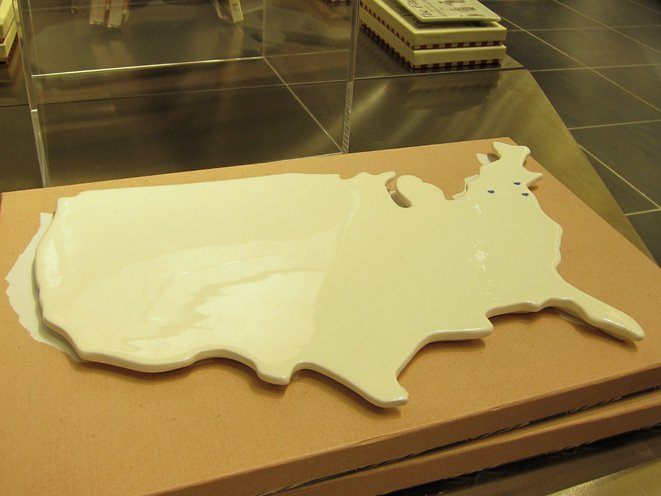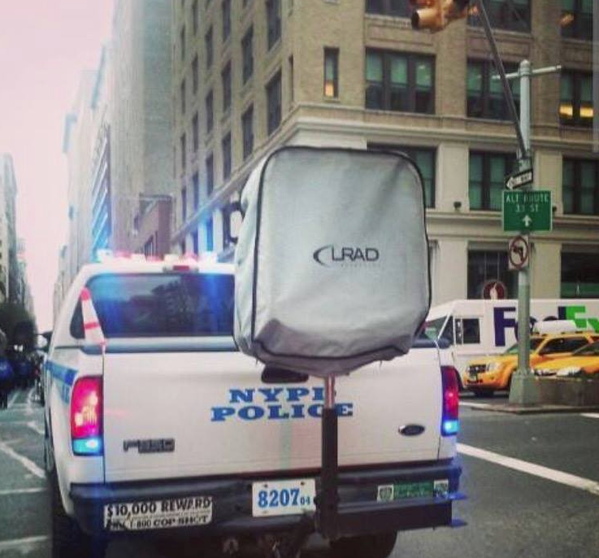
It is New Year’s Day, and way past time to recognize the significance of the 9/11 Museum Cheese Board in the development of my practice.

It is true that in late 2014, recognizing the aesthetic resonance of an LRAD and its cover with the work of Olafur Eliasson and Marcel Duchamp, respectively, combined with Olafur’s call to take the tools and methodologies of art beyond the confines of the art world led directly to my idea to create Protestors’ Folding Item, an artwork in the collection of the NYPD, with the intention of using VARA in court to enforce the piece’s exhibition integrity and require LRAD remain covered in public. From there I stepped up a practice of declaring works that involve objects I do not own or situations I don’t control-including some already in museums, which is convenient, conservationally.

But after spending more than six years now looking for them in the wild, and exploring various techniques and approaches for replicating them, it’s clear to me that the complicated condition of these cheese boards helped map the territory where Protestors’ Folding Item would soon be found: the implications of the art/not-art inflection point, the context of those states, and the related issues of authorship, the object, and the exercise of control.
Almost as soon as Jen Chung reported the existence of the porcelain serving trays in Gothamist, I began researching their creation, and identifying their creators. That the trays were significant was immediately obvious. That their significance came entirely from their terribleness was, too, but the immediate media focus on their terribleness made their significance an awkward subject. I never heard back from the designer or the company after sending what I thought was a very diplomatic and persuasive email request for the middle of a sudden PR maelstrom:
Dear Ms. S––,
Thank you in advance for your consideration, and for your assistance in a story on the porcelain platter Rosanna designed for the 9/11 Museum. I am a writer in Washington DC and New York City, and have published my independent art- and architecture-related research at my blog, greg.org: the making of, since 2001. The site was recently recognized by the Creative Capital | Warhol Foundation Arts Writers Program.
One of the subjects I covered rather extensively and authoritatively was the design competition for the World Trade Center Memorial. I was impressed by the Cartography platter in the recently opened 9/11 Museum Gift Shop, and the debates it has engendered about the museum, the memorialization process, and different experiences and modes of remembrance.
I would hope that as a company and a designer, Rosanna and Ms. Bowles might be able to share insights on the design and the process of creating it, and to site the platter in a constructive and empathetic context.
If it’s germane to this particular commission, it would also be helpful to hear about other museum or philanthropic projects, or perhaps to expand the context to include the history of commemorative plates, figures, and other objects.
Thank you again, and I look forward to your response, and to answering any questions that can facilitate my research.Sincerely,
As is clear, though, I was still in research mode. It felt like a delicate balance, a fine line, to acknowledge that attention came from controversy, which is not something a manufacturer of porcelain serving pieces and collectibles is anticipating. But it’s also the case that though I was obviously not going to declare their trays works of art in my interview request, I was not yet ready to do it myself, even in my own mind. So for several months in 2014, these trays existed for me as objects in a state of tension.
The 9/11 Serving Trays are evidence of the historical and cultural reality of our world right then, when an expensive museum at the site of a terrorist attack slash commercial real estate development contracted with a housewares company to design an exclusive product for sale in their gift shop. The object that resulted was not a commemorative plate, which had already been produced in great volume by 2014; it was a ceramic tray in the shape of the continental United States, in cream glaze finish, and blank except for three navy blue hearts to mark the sites of four crashed planes. The box called it not a cheese board, but a serving tray. What could be more honorable than serving, they might have thought when they approved the copy. And when faced by overwhelming criticism, even from The 9/11 Families, a group used regularly until that point as human shields for all manner of capital- and politics-driven decisions at the WTC site, the museum defended its offering of “keepsakes” to a bigger market, “the 9/11 Community,” which could include not just the 9/11 Industry, but anyone who has the “historic experience” of visiting the museum itself.
I’m rambling, obviously, but after the internal debate over whether to post works like the blurred Frida, I am deciding to err on the side of slightly more info. And also, for the first time, my periodic internet sweep turned up this photo on a 3-month-old reddit post, the first evidence of the 9/11 Cheese Board existing outside the 9/11 Museum.

So there is something that in many other circumstances would be called hope. And that feels very fitting for today, and for this moment in time.
Previously, related: Protestors’ Folding Item, 2014
